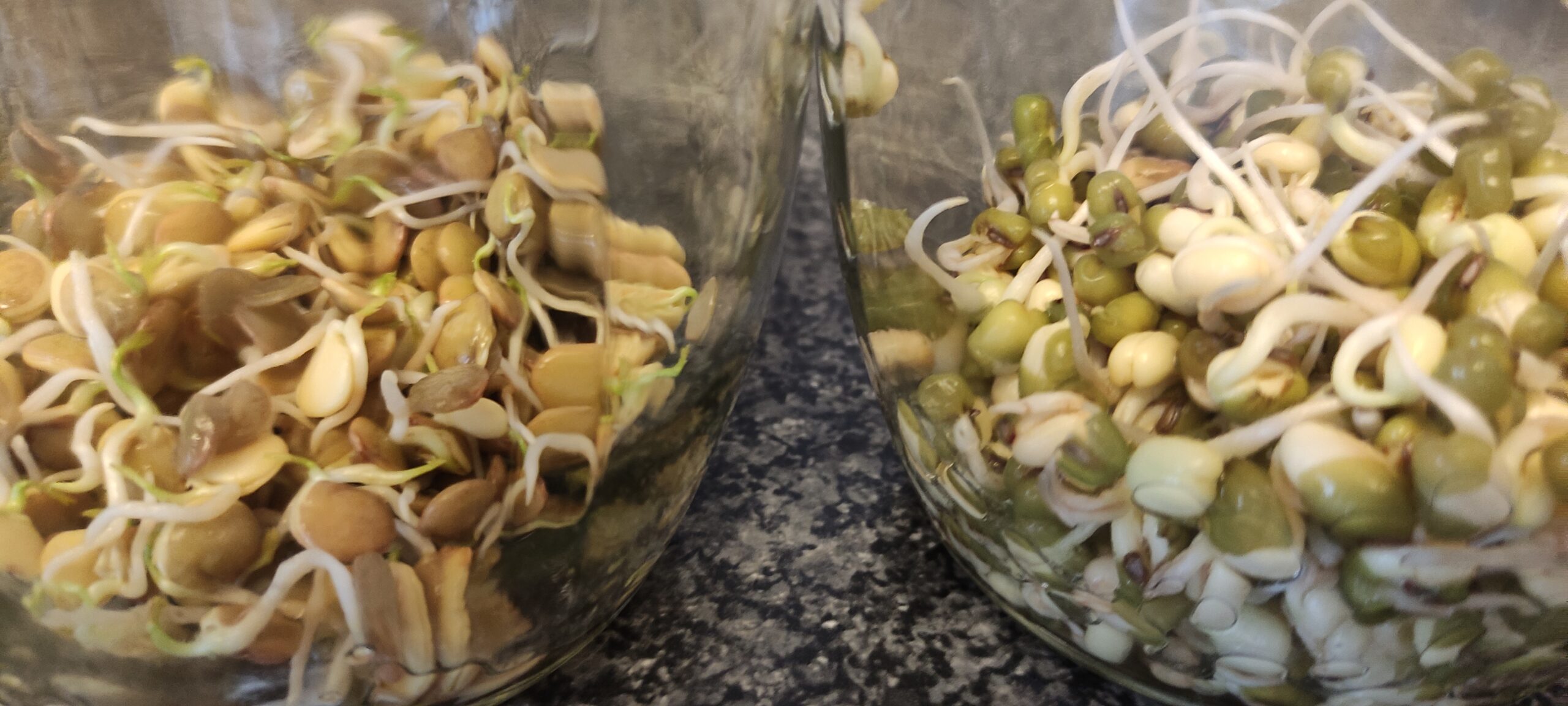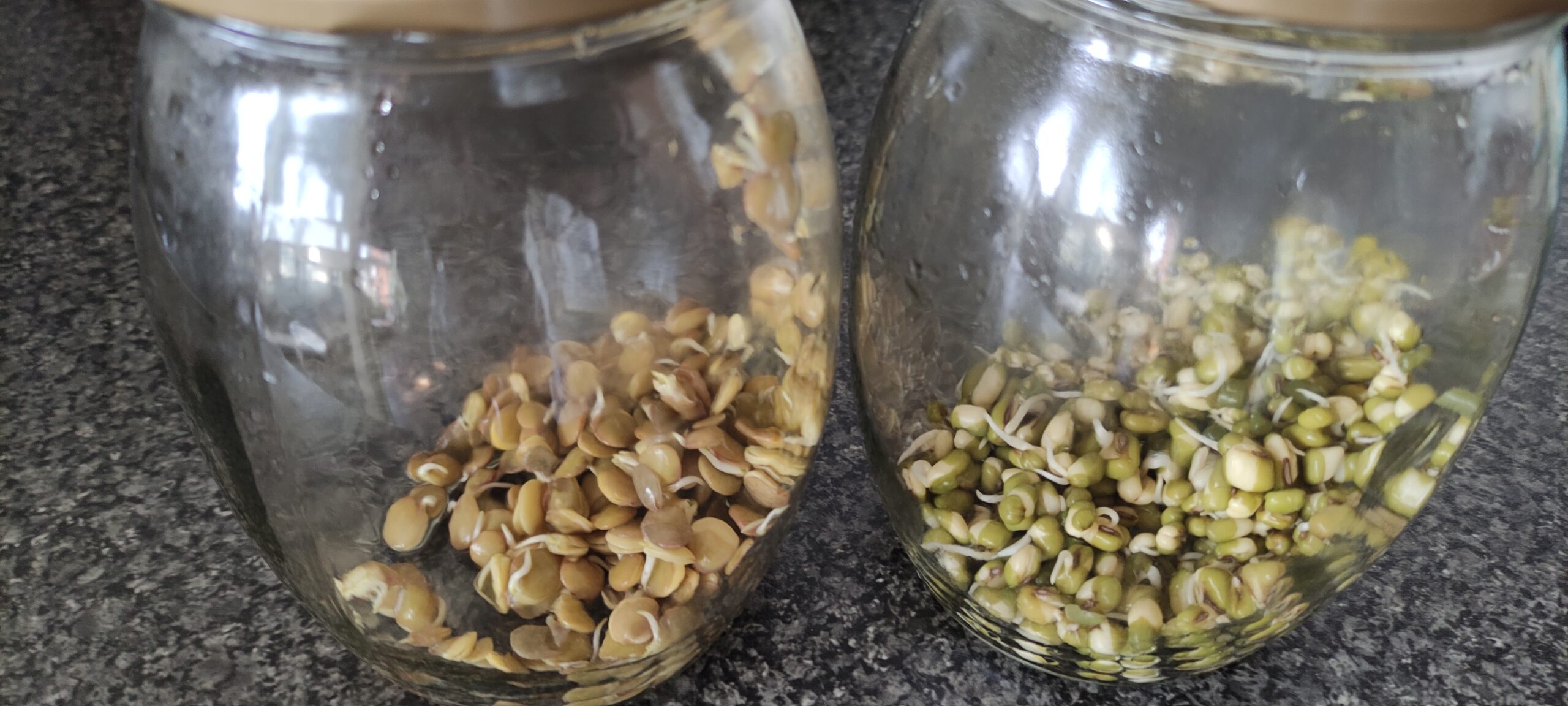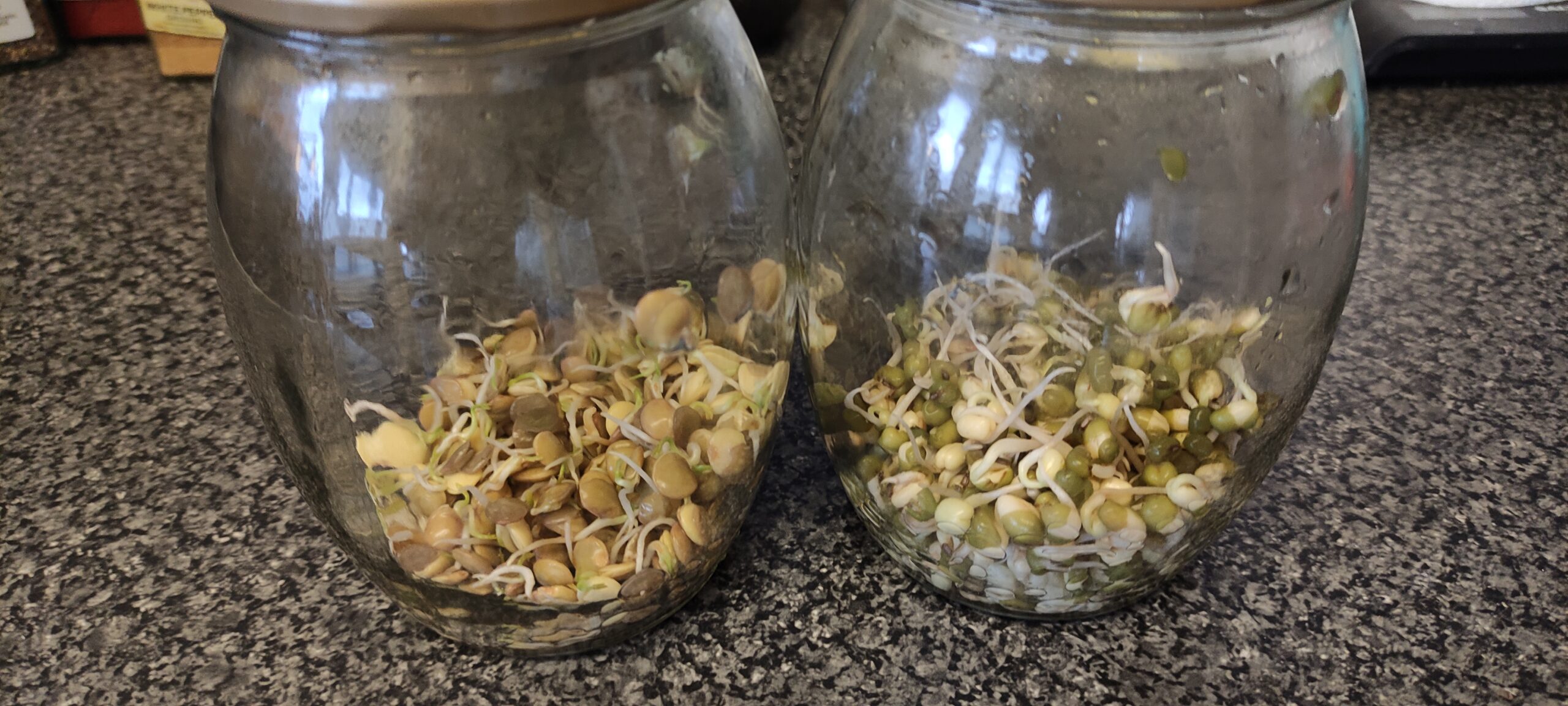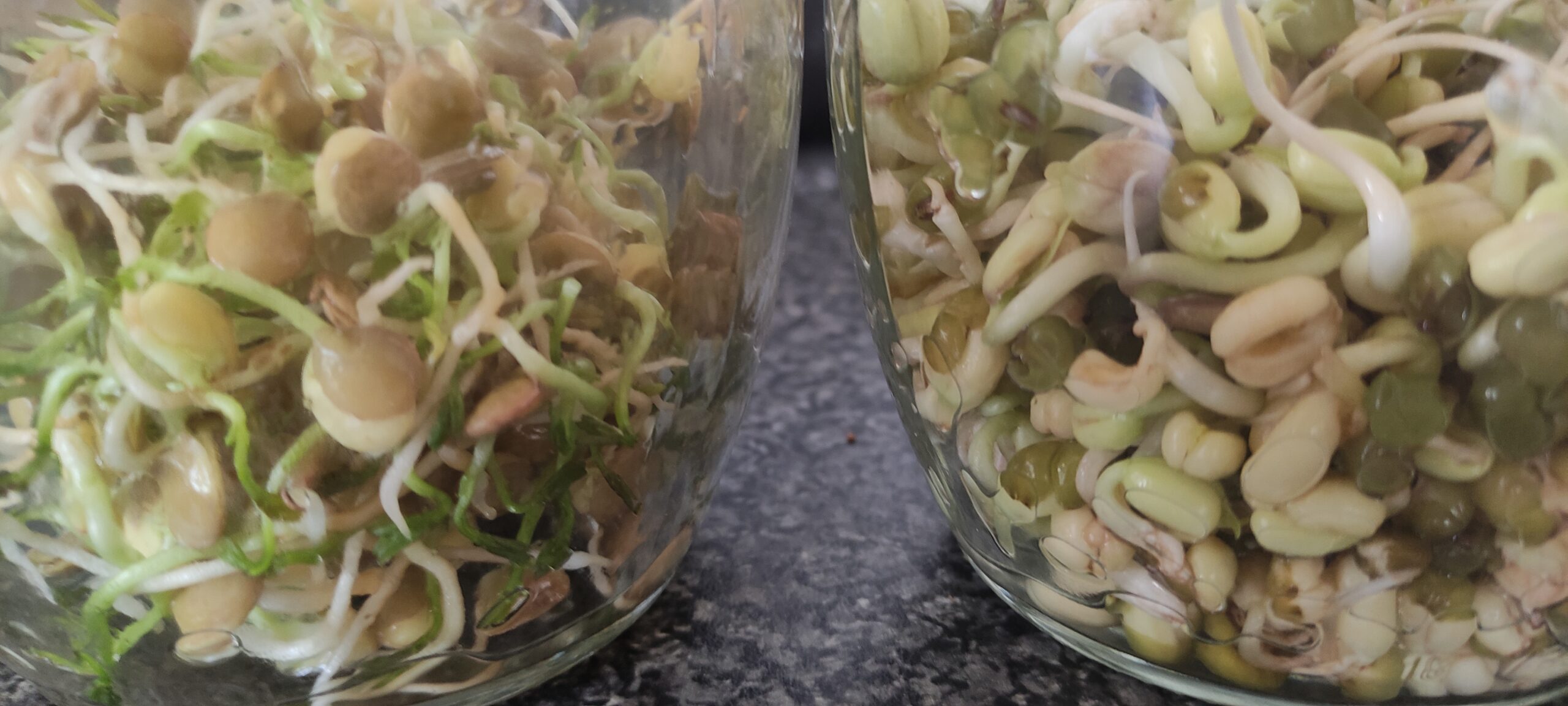Sprouted pulses

Have you ever tried sprouting seeds or pulses at home? Over the years I've sprouted practically everything, and I can say from experience: all seeds are not created equal!
Did you know, for example, that there are three different types of whole lentil (i.e., not split - they will not sprout) floating around out there in the UK - green ones, brown ones (which produces those orange split lentils you see, so beloved by soup makers), and lentilles vertes (the same as posh Puy lentils, but in this case they weren't grown in the French prefecture of Le Puy). Of these, it's only the humble green lentil that is guaranteed to sprout for you every time (you'd be lucky to achieve 60% germination with the brown or the Puy-type lentils). The only other pulse that is so obliging is the mung bean.
I was going to say that I imagine you will know what mung bean sprouts taste like...but these days the supermarket variety taste mainly of bleach. Very young sprouts are sweet, like raw peas. As they grow, that sweetness disappears. Lentil sprouts are sweet like peas, and ever so slightly peppery. To an extent, they retain their sweetness as they grow. Both make excellent toppings for a salad or slaw, or healthy alternatives to fat laden snacks like roasted peanuts or Pringles.
Although this post is really about green lentils and mung beans, I cannot go without mentioning seeds to sprout, other than mustard and cress (most of which is rapeseed, btw). Decades ago when I regularly ate at the Hare Krishna restaurant in Auckland, a salad always included a portion of homemade curd cheese (delicious!) and was finished off with sprouted seeds (grown as described here, without soil), often alfalfa, occasionally fenugreek (I just don't enjoy the weird effect as they metabolize). I've also tried sprouting radish seeds (they're far too fiery for me), but my favourite by far is (drumroll please...) broccoli seeds. As a fully paid up member of the brassica family, all of which contain mustard-like sulphur compounds, the sprouting seeds have a little "bite" to them.
Ingredients
1 tablespoon or so green lentils or mung beans
a jar, water, and a fine mesh sieve
If you're unfamiliar with any of the ingredients, find out more about them here:
Method
1.
Day One: In the morning, place the seeds into a clean jar, fill with water, and pop on the lid. Drain the water off 12 hours later, rinse the seeds, drain them again, and fill the jar with fresh water.

2.
Day Two: In the morning, drain off the water, rinse the seeds, and drain them again. Rinse and drain them again in the evening.

3.
Day Three: They are now putting out roots. They're quite edible, and are currently at their sweetest. Continue rinsing and draining them morning and evening.

4.
Day Four: Perfection! The roots (sprouts) are now over half an inch long. If you made them both, they'd be perfect for a sprout salad at this point, serving 2 or maybe 3 as a side. Or grate in some raw swede/rutabaga/neep (the yellow type) and dress with a hearty vinaigrette (made with prepared English mustard and malt vinegar) for a great slaw...or perhaps grated beetroot (raw or even cooked).

5.
Day Five: The lentils have put out their seed leaves; though still edible, from this point on the texture is quite tough because of these leaves - more of a salad vegetable than a sprout. The seed part of the mung beans may be changing colour - to green or possibly purple - and most of their sweetness is gone.

6.
Day Six: The lentils now have the chewy texture of raw vegetables, really only suitable for stir fries and slaws. From today the mung beans could be used for stir fries, though you may wish to grow them on for a day or two more. if you are using them for stir fries, you may want to blanch them first: place them into a pan of boiling water for 3 minutes, drain, then plunge them immediately into a bowl of ice cold water.

By now I'm sure many of you will have a question for me. Why did the mung beans sprouts not turn out like the ones sold commercially? The answer is rather odd. It's because they weren't weighted down, nor forced to compete for space, as they would have to if they were growing in soil. Also they weren't grown in the dark, which would have "blanched" their appearance. Though I'm posting a video showing a way to grow a commercial crop, I BEG you to read the warning below...and not to be seduced into trying it.
There are two HUGE drawbacks with this method of sprouting. The first is the need for regular rinsing 24 hours a day for several days running. The second is that the growing conditions provide the perfect breeding ground for deadly microbes. Some years ago in the UK people died from eating organically grown bean sprouts...which is why supermarket sprouts now taste of nothing but bleach.
Any questions? You can use the comments form at the bottom of the page.
Did you know?
You'll find recipes at the back of all the books in the Send for Octavius Guy series: